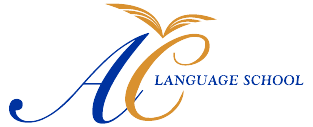- Learn how to design, build and deploy large-scale big data systems for complex enterprise architectures.
- Understand various distributed processing frameworks and engine main with Apache Spark, Hadoop, Apache Flink, and their use-cases.
- Learn how to migrate traditional data processing workloads to cloud-based big data services with AWS, Google Cloud, and Microsoft Azure.
- Gain practical skills in architecting and configuring big data systems on cloud platforms as well as on-premise infrastructures.
- Learn how to design data warehouse solutions and understand different ETL techniques.
- Develop hands-on experience in implementing data lakes, warehouses, and data marts.
- Understand data governance, security, and privacy best practices in big data systems.
- Learn how to implement end-to-end workflows across batch processing, stream processing, and machine learning using stack Apache Spark, Apache Flink, and TensorFlow.
- Develop hands-on skills in integrating heterogeneous systems including communication with restful APIs, file transfers, message queues, and publish/subscribe mechanisms.
- Gain practical experience in implementing deep learning techniques for real-world problems, including natural language processing, image, and voice recognition.
-
 Course Title: Certified Senior Big Data Engineer Proficiency Level: Advanced Prerequisite Requirements: Certification as a Big Data Engineer or equivalent work experience of at least 3 years. Course Description: Unit 1: Introduction to Big Data Architecture and Design Unit 2: Analyzing Large-Scale Data with Apache Spark Unit 3: Distributed Data Science and Engineering Using Spark Unit 4: Migrating Data Processing Workloads to Cloud Unit 5: Big Data Implementation on AWS Unit 6: Architecting Big Data Solutions with Google Cloud Unit 7: Designing and Implementing Big Data on Microsoft Azure Unit 8: Data Warehouse Architecture and Design Unit 9: Implementing Data Lakes and Data Warehouses Unit 10: Big Data Governance and Security Unit 11: Data Pipeline and Workflow Orchestration Unit 12: Integrating Big Data with Enterprise Systems Unit 13: Machine Learning for Big Data Unit 14: Applying Deep Learning Techniques on Big Data Unit 15: Distributed Data Processing with Apache Flink Unit 16: Capstone Project Course Objectives:
Course Title: Certified Senior Big Data Engineer Proficiency Level: Advanced Prerequisite Requirements: Certification as a Big Data Engineer or equivalent work experience of at least 3 years. Course Description: Unit 1: Introduction to Big Data Architecture and Design Unit 2: Analyzing Large-Scale Data with Apache Spark Unit 3: Distributed Data Science and Engineering Using Spark Unit 4: Migrating Data Processing Workloads to Cloud Unit 5: Big Data Implementation on AWS Unit 6: Architecting Big Data Solutions with Google Cloud Unit 7: Designing and Implementing Big Data on Microsoft Azure Unit 8: Data Warehouse Architecture and Design Unit 9: Implementing Data Lakes and Data Warehouses Unit 10: Big Data Governance and Security Unit 11: Data Pipeline and Workflow Orchestration Unit 12: Integrating Big Data with Enterprise Systems Unit 13: Machine Learning for Big Data Unit 14: Applying Deep Learning Techniques on Big Data Unit 15: Distributed Data Processing with Apache Flink Unit 16: Capstone Project Course Objectives: -
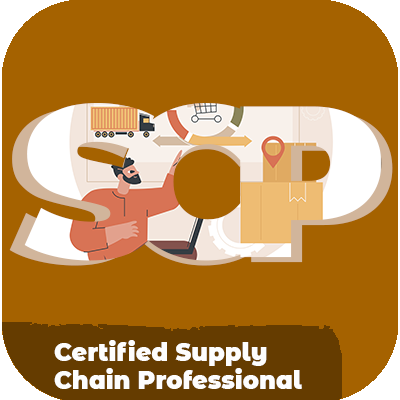 Course Title: Certified Supply Chain Professional Course Description: The course is designed to help learners develop practical skills required for an intermediate Certified Supply Chain Professional in a modern business environment. The course focuses on industry-wide standards and best practices. All objectives are measurable, and learners are equipped with the knowledge and skills needed for a successful career in supply chain management. Course Structure: Unit 1: Introduction to Supply Chain Management Unit 2: Demand Management Unit 3: Advanced Forecasting Techniques Unit 4: Inventory Management Unit 5: Distribution and Transportation Management Unit 6: Warehouse Management Unit 7: Procurement and Purchasing Unit 8: Supplier Management Unit 9: Lean Supply Chain Management Unit 10: Sustainability in Supply Chain Management Unit 11: Project Management in Supply Chain Unit 12: Capstone Project Course Objectives:
Course Title: Certified Supply Chain Professional Course Description: The course is designed to help learners develop practical skills required for an intermediate Certified Supply Chain Professional in a modern business environment. The course focuses on industry-wide standards and best practices. All objectives are measurable, and learners are equipped with the knowledge and skills needed for a successful career in supply chain management. Course Structure: Unit 1: Introduction to Supply Chain Management Unit 2: Demand Management Unit 3: Advanced Forecasting Techniques Unit 4: Inventory Management Unit 5: Distribution and Transportation Management Unit 6: Warehouse Management Unit 7: Procurement and Purchasing Unit 8: Supplier Management Unit 9: Lean Supply Chain Management Unit 10: Sustainability in Supply Chain Management Unit 11: Project Management in Supply Chain Unit 12: Capstone Project Course Objectives:- Understand the fundamental concepts of supply chain management
- Learn how to manage demand and forecast future sales and production needs
- Understand the fundamentals of efficient inventory management and control processes
- Develop practical skills in distribution and transportation management, including route optimization, network design, and shipment tracking
- Develop skills in warehouse management and optimization, including layout design, inventory tracking, and labor management
- Gain an understanding of procurement and purchasing, including supply market analysis, supplier evaluation, and vendor selection
- Learn how to develop and maintain strong relationships with suppliers and ensure that they meet quality, delivery, and cost requirements
- Gain practical experience in lean supply chain management, including value stream mapping, continuous improvement, and defect reduction
- Understand the importance of sustainability and ethical considerations in supply chain management and identify the potential social and environmental impacts of supply chain operations
-
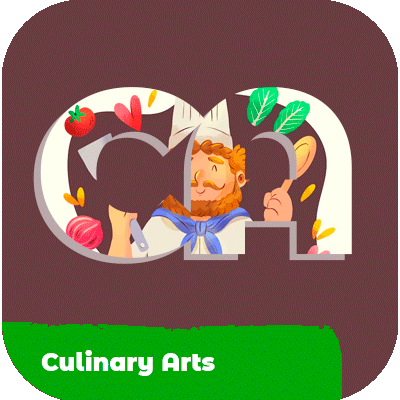 Course Description: The online Culinary Arts Course explores the fundamentals of food preparation and cooking techniques. This course provides an introduction to the principles of nutrition, safety, sanitation, and organization for professional cookery. Students will gain knowledge on a variety of ingredients used in traditional recipes from around the world as well as how to properly use them when creating dishes. Course Objectives: 1) Understand the basics of food science, including flavor combinations, texture modifications, and plate presentation; 2) Learn safe handling practices and kitchen safety protocols; 3) Manage time effectively while preparing multiple dishes; 4) Recognize common methods of food preservation; 5) Selection of appropriate tools required for tasks completed in a commercial setting; 6) Create both classical and modern dishes that reflect global cuisines; 7) Plan balanced meals based on nutritional needs or dietary restrictions.
Course Description: The online Culinary Arts Course explores the fundamentals of food preparation and cooking techniques. This course provides an introduction to the principles of nutrition, safety, sanitation, and organization for professional cookery. Students will gain knowledge on a variety of ingredients used in traditional recipes from around the world as well as how to properly use them when creating dishes. Course Objectives: 1) Understand the basics of food science, including flavor combinations, texture modifications, and plate presentation; 2) Learn safe handling practices and kitchen safety protocols; 3) Manage time effectively while preparing multiple dishes; 4) Recognize common methods of food preservation; 5) Selection of appropriate tools required for tasks completed in a commercial setting; 6) Create both classical and modern dishes that reflect global cuisines; 7) Plan balanced meals based on nutritional needs or dietary restrictions. -
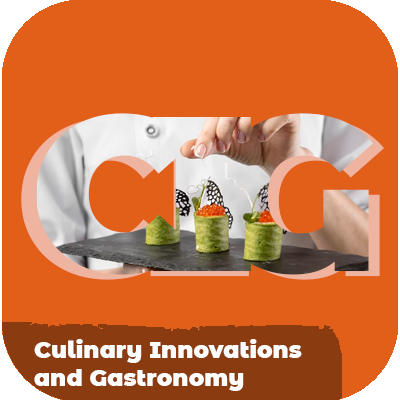 Course Title: Culinary Innovations and Gastronomy: Creating Memorable Dining Experiences Course Overview: Welcome to the online course on Culinary Innovations and Gastronomy. This comprehensive 20-hour course is designed to immerse learners in the world of culinary creativity, gastronomic trends, and the art of crafting unforgettable dining experiences. By the end of the course, participants will possess the skills and knowledge required to design and execute innovative culinary creations that delight the senses and leave a lasting impact on guests. Course Structure:
Course Title: Culinary Innovations and Gastronomy: Creating Memorable Dining Experiences Course Overview: Welcome to the online course on Culinary Innovations and Gastronomy. This comprehensive 20-hour course is designed to immerse learners in the world of culinary creativity, gastronomic trends, and the art of crafting unforgettable dining experiences. By the end of the course, participants will possess the skills and knowledge required to design and execute innovative culinary creations that delight the senses and leave a lasting impact on guests. Course Structure:- Course Length: 20 hours of instruction
- Proficiency Level: Intermediate
- Prerequisite Requirements: Basic understanding of culinary fundamentals or relevant industry experience is recommended.
- Identify current gastronomic trends and their influence on culinary innovation.
- Cultivate creativity to design dishes that align with modern culinary preferences.
- Apply fusion cuisine principles to blend diverse culinary traditions.
- Develop an understanding of harmonious flavor pairings to enhance dining experiences.
- Explore the principles and techniques of molecular gastronomy.
- Elevate dish presentation through innovative plating and aesthetic considerations.
- Craft compelling culinary narratives to engage guests on a sensory and emotional level.
- Design menus that tell cohesive culinary stories and immerse diners in unique experiences.
- Conceptualize and execute an original dining experience showcasing culinary innovations.
- Apply acquired knowledge and skills to create memorable and impactful dining moments.
-
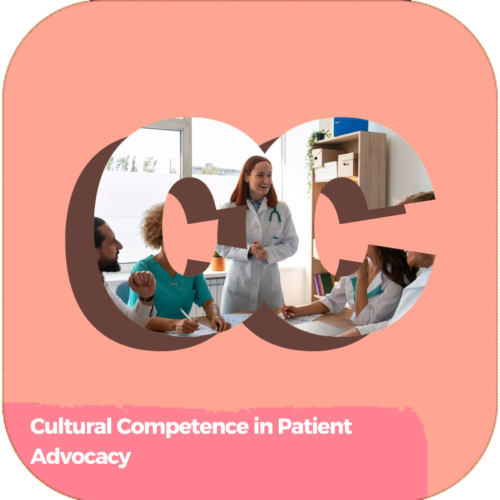 Course Description: This course focuses on developing cultural competence in patient advocacy. Participants will learn about cultural diversity, inclusive practices, and strategies for providing culturally sensitive support to diverse patient populations. Course Outcomes:
Course Description: This course focuses on developing cultural competence in patient advocacy. Participants will learn about cultural diversity, inclusive practices, and strategies for providing culturally sensitive support to diverse patient populations. Course Outcomes:- Develop proficiency in cultural competence for patient advocacy.
- Implement inclusive practices in patient advocacy.
- Address the unique needs of diverse patient populations.
- Monitor and evaluate the effectiveness of culturally competent advocacy.
- Enhance patient outcomes through culturally sensitive support.
- Identify key principles of cultural competence in patient advocacy.
- Develop and implement inclusive practices in patient advocacy.
- Address the unique needs of diverse patient populations.
- Monitor and evaluate the impact of cultural competence in advocacy.
- Address common challenges in providing culturally competent advocacy.
- Educate patient advocates about cultural competence.
- Collaborate with cultural competence professionals to optimize support.
- Ensure compliance with cultural competence guidelines.
- Develop strategies for continuous improvement in cultural competence.
- Review case studies to apply culturally competent advocacy techniques in real-world settings.
- Introduction to Cultural Competence in Patient Advocacy
- Principles of Cultural Diversity
- Developing Inclusive Practices in Patient Advocacy
- Addressing Unique Needs of Diverse Populations
- Monitoring and Evaluating Cultural Competence
- Addressing Challenges in Cultural Competence
- Educating Advocates on Cultural Competence
- Collaboration with Cultural Competence Professionals
- Compliance with Cultural Competence Guidelines
- Case Studies and Practical Applications
-
 Course Description: This course explores how culture is used as a strategic tool in diplomacy to build influence, foster mutual understanding, and advance foreign policy goals. Participants will examine cultural diplomacy initiatives, global branding, soft power theory, and the design of programs that promote national image and cross-cultural dialogue. Course Length: 6 weeks (36 total instructional hours) Proficiency Level: Advanced Prerequisite: Completion of a lower-intermediate ESL course or equivalent language proficiency Course Objectives:
Course Description: This course explores how culture is used as a strategic tool in diplomacy to build influence, foster mutual understanding, and advance foreign policy goals. Participants will examine cultural diplomacy initiatives, global branding, soft power theory, and the design of programs that promote national image and cross-cultural dialogue. Course Length: 6 weeks (36 total instructional hours) Proficiency Level: Advanced Prerequisite: Completion of a lower-intermediate ESL course or equivalent language proficiency Course Objectives:- Define soft power and its role in contemporary diplomacy.
- Analyze the strategic value of cultural exchange and engagement.
- Design programs that promote national values and mutual understanding.
- Evaluate public diplomacy tools such as arts, education, and sports.
- Assess the effectiveness of global cultural diplomacy campaigns.
- Coordinate cultural initiatives with embassies and ministries.
- Align cultural programming with broader diplomatic strategy.
- Measure cultural perception and influence in global affairs.
- Foster inclusive, respectful intercultural dialogue and outreach.
- Develop a national soft power strategy for international engagement.
-
 Course Description: This advanced course immerses participants in the formalities, ceremonies, and power dynamics of global protocol as a cornerstone of diplomatic excellence. Students will explore the nuances of state visits, official correspondence, ceremonial precedence, and the unspoken codes that govern elite diplomacy. Drawing on real-world diplomatic case studies, the course empowers future leaders to navigate high-level environments with confidence, precision, and cultural intelligence—maximizing influence through mastery of protocol and prestige. Course Length: 6 weeks (36 total instructional hours) Proficiency Level: Advanced
Course Description: This advanced course immerses participants in the formalities, ceremonies, and power dynamics of global protocol as a cornerstone of diplomatic excellence. Students will explore the nuances of state visits, official correspondence, ceremonial precedence, and the unspoken codes that govern elite diplomacy. Drawing on real-world diplomatic case studies, the course empowers future leaders to navigate high-level environments with confidence, precision, and cultural intelligence—maximizing influence through mastery of protocol and prestige. Course Length: 6 weeks (36 total instructional hours) Proficiency Level: AdvancedPrerequisite:
Completion of a lower-intermediate ESL course or equivalent language proficiency Course Objectives:- Interpret and apply international protocol standards in diverse diplomatic settings.
- Analyze the role of ceremonial prestige in international relations.
- Demonstrate appropriate diplomatic etiquette across cultures.
- Distinguish between formal and informal protocol in bilateral and multilateral contexts.
- Prepare official diplomatic documents and correspondence in proper protocol format.
- Coordinate high-level diplomatic events and state visits.
- Apply the rules of precedence and rank across governments and international organizations.
- Recognize cultural sensitivities and avoid protocol faux pas.
- Evaluate real-world diplomatic incidents involving protocol successes or failures.
- Design and implement a full diplomatic protocol strategy for a hypothetical foreign mission.
-
 Course Description: This course examines diplomatic errors rooted in cultural misunderstandings and provides tools for prevention, response, and recovery. Using real-world case studies, participants will analyze failures in cross-cultural communication, develop cultural intelligence strategies, and practice corrective diplomacy in simulated scenarios. Course Length: 6 weeks (36 total instructional hours) Proficiency Level: Advanced Prerequisite: Completion of a lower-intermediate ESL course or equivalent language proficiency Course Objectives:
Course Description: This course examines diplomatic errors rooted in cultural misunderstandings and provides tools for prevention, response, and recovery. Using real-world case studies, participants will analyze failures in cross-cultural communication, develop cultural intelligence strategies, and practice corrective diplomacy in simulated scenarios. Course Length: 6 weeks (36 total instructional hours) Proficiency Level: Advanced Prerequisite: Completion of a lower-intermediate ESL course or equivalent language proficiency Course Objectives:- Identify cultural dimensions and how they influence diplomatic behavior.
- Analyze real-world diplomatic missteps and their cultural roots.
- Assess the risks and consequences of cultural insensitivity in diplomacy.
- Use cultural intelligence (CQ) to anticipate and manage cross-cultural challenges.
- Develop recovery strategies and apology protocols after missteps.
- Engage in diplomatic correction through appropriate channels.
- Practice culturally adaptive language and body language.
- Design proactive cultural briefings and preparation guides.
- Simulate recovery and narrative control in diplomatic blunders.
- Produce a cultural risk mitigation plan for an assigned post.
-
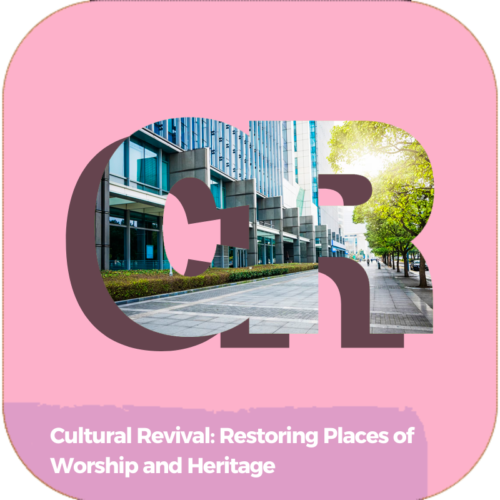 Course Title and Description: Understand techniques for preserving and rebuilding cultural landmarks. This course covers restoration practices for heritage sites, focusing on cultural sensitivity, sustainability, and historical accuracy. Learning Objectives:
Course Title and Description: Understand techniques for preserving and rebuilding cultural landmarks. This course covers restoration practices for heritage sites, focusing on cultural sensitivity, sustainability, and historical accuracy. Learning Objectives:- Restore heritage sites and places of worship with cultural sensitivity.
- Apply sustainable practices in restoration projects.
- Address regulatory and compliance issues in heritage restoration.
- Develop project plans for preserving cultural landmarks.
- Introduction to Heritage and Cultural Landmark Restoration
- Understanding Historical and Cultural Contexts
- Materials and Techniques for Authentic Restoration
- Sustainability in Heritage Site Restoration
- Policy and Compliance in Cultural Preservation Projects
- Accessibility in Restored Heritage Sites
- Community Engagement in Cultural Restoration Projects
- Funding and Resource Management for Restoration Projects
- Case Studies: Successful Restoration Projects Worldwide
- Capstone Project – Developing a Restoration Plan for a Heritage Site
-
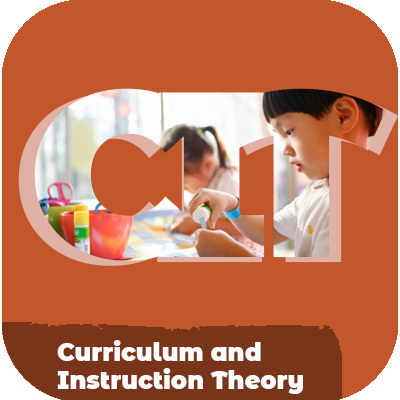
Curriculum and Instruction Theory
Course Description: This course will explore systematic, analytical approaches to curricular and instructional planning. It examines what it means to observe, see, and make sense out of learning in educational environments. It asks participants to analyze what happens in these environments (learning and teaching, student interactions, teacher-student relationships, etc.) and take concrete action based on that analysis.Learning Objectives:- Understand what is curriculum and instruction and why is it important as a field of inquiry
- Review the research literature on curriculum, assessment and instruction inform the understanding of student learning and thereby affect current educational practice
- Recognize the effect of using systematic observation tools has on the teacher’s ability to reflect on classroom instruction
- Learn how to analyze and implement effective teaching practice
